The Order of Calatrava is the oldest military and religious Order in Spain, dating to its establishment by Sancho II, King of Castile in 1158 AD.
By Nick Nutter | Updated 30 Sep 2022 | Andalucia | History |
Login to add to YOUR Favourites or Read Later


Order of Calatrava Knight Monk
In 1158, the fortress and town of Calatrava in Castile, then held by the Knights Templar, was abandoned to the Muslim occupiers of al-Andalus. Calatrava was offered to a former soldier, Diego Velazquez and the abbot of the Cistercian Monastery of Fitero in return for their helping to defend Toledo and re-occupy Calatrava. The Archbishop of Toledo supplied material and spiritual support to the 20,000 strong militia that was gathered. Their mission was ‘to defend against the pagans, the enemies of the cross of Christ’.

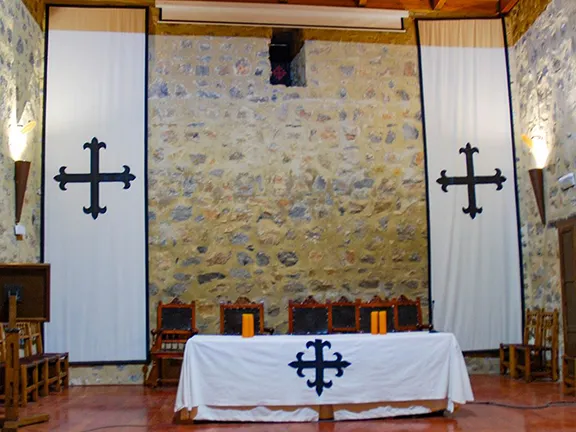
Order of Calatrava Banners
In reality, the militia were mainly drawn from former lay brothers of the Cistercian abbey at Calatrava and were variously employed in manual trades such as tending the herds, construction, farm labour, or husbandry. Diego recommended that they become soldiers of the Cross. They were motivated by religious and monetary rewards. The canonical confirmation of the Order of Calatrava was granted by a Bull signed on 25 September 1164 by Pope Alexander III. The order was officially affiliated to the Cistercian Order in 1187.
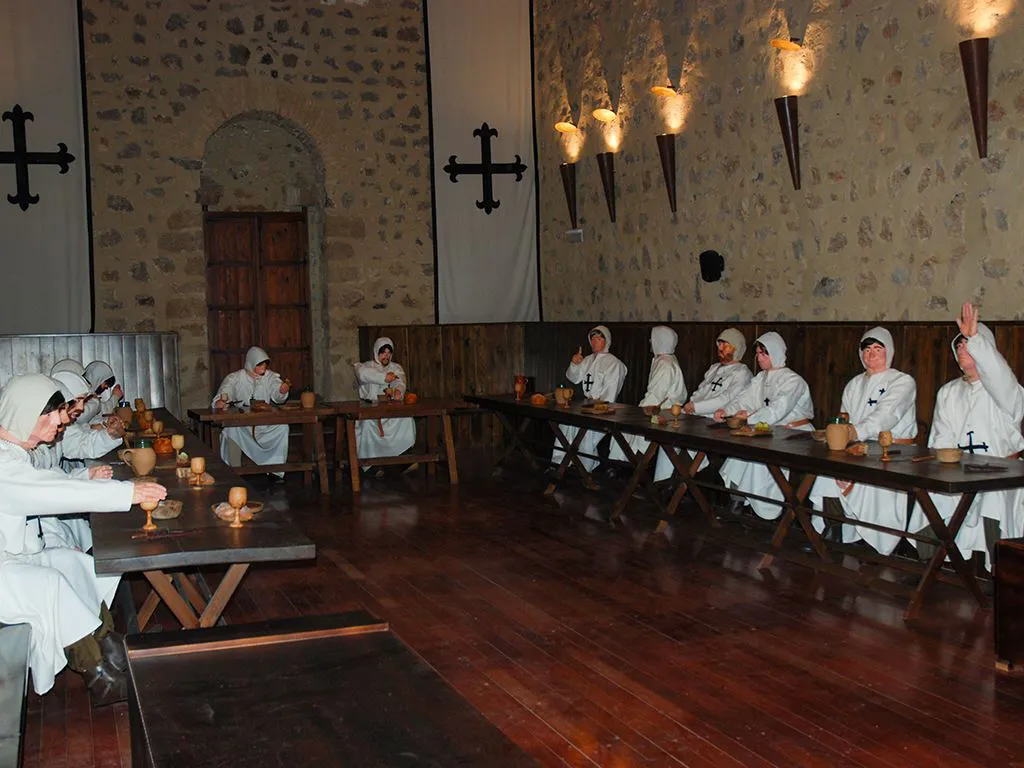

In 1195, Yaqub Al-Mansur, the third Almohad Caliph, defeated Alfonso VIII of Castile at the Battle of Alarcos and seized the fortress of Calatrava. The surviving knights erected a new fortress, the castle of Salvatierra, isolated in the middle of Muslim lands, and kept it until 1209. During this period, the Knights were known as the Knights of Salvatierra.
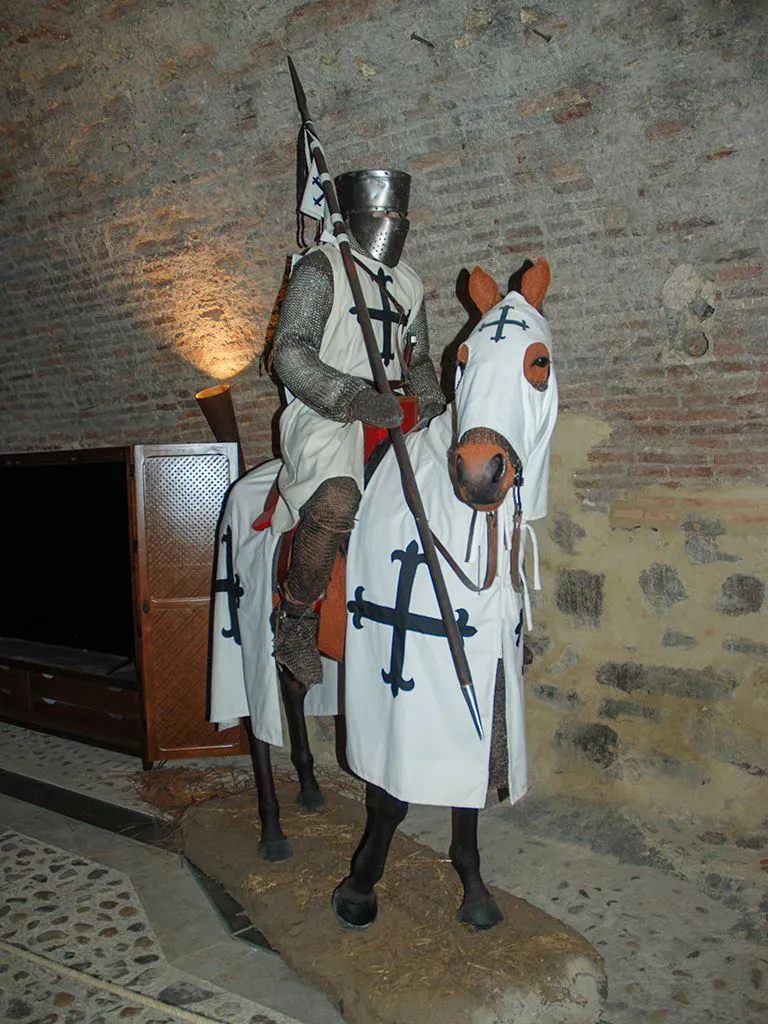
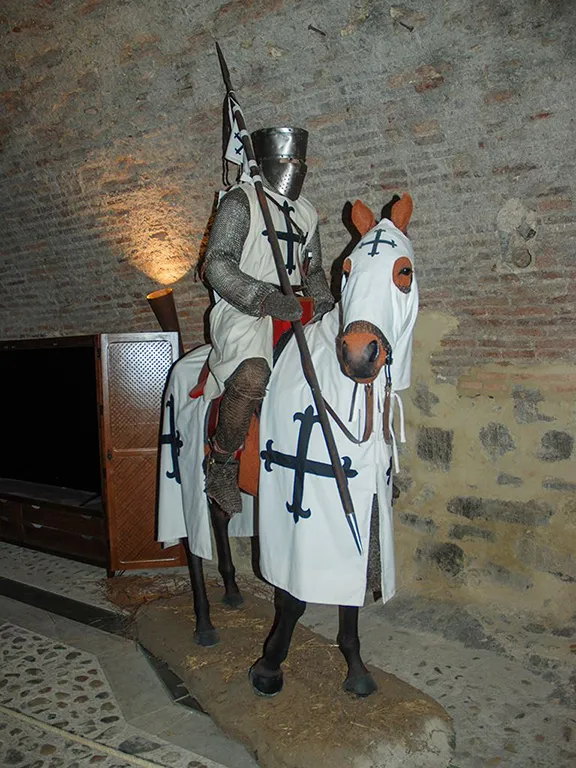
Knight of Calatrava
Following the Christian victory at the Battle of Las Navas de Tolosa in 1212, during which Grand Master of the Order of Salvatierra, Ruy Díaz de Yanguas was severely injured, the order reconquered the region, including Calatrava, and erected a new fortress, Calatrava la Nueva. The old fortress became known as Calatrava Vieja, the old Calatrava and the Order regained its former name in 1216.


Knight Commander of the Order of Calatrava
The order was rewarded with huge grants of territory which was organized in commanderies; placed under the direct authority of the Holy See. Calatrava had gained enormous resources of men and wealth, with lands and castles scattered along the borders of Castile.


Territory controlled by the Knightly Orders
In what is now Andalucia, the Order of Calatrava controlled extensive tracts in Jaen province, centred around the fortress of Alcaudete. It exercised feudal lordship over thousands of peasants and vassals. The Order of Calatrava was capable of bringing 1200 to 2000 knights to the field of battle, a considerable force in the Middle Ages. Castillo de Alcaudete was on the border between Christian Castille and Muslim Granada for over 400 years, constantly changing hands until the Knights of the Order of Calatrava took over in the early 14th century. They used the fortress as a base from which to conduct raids into Muslim territories.
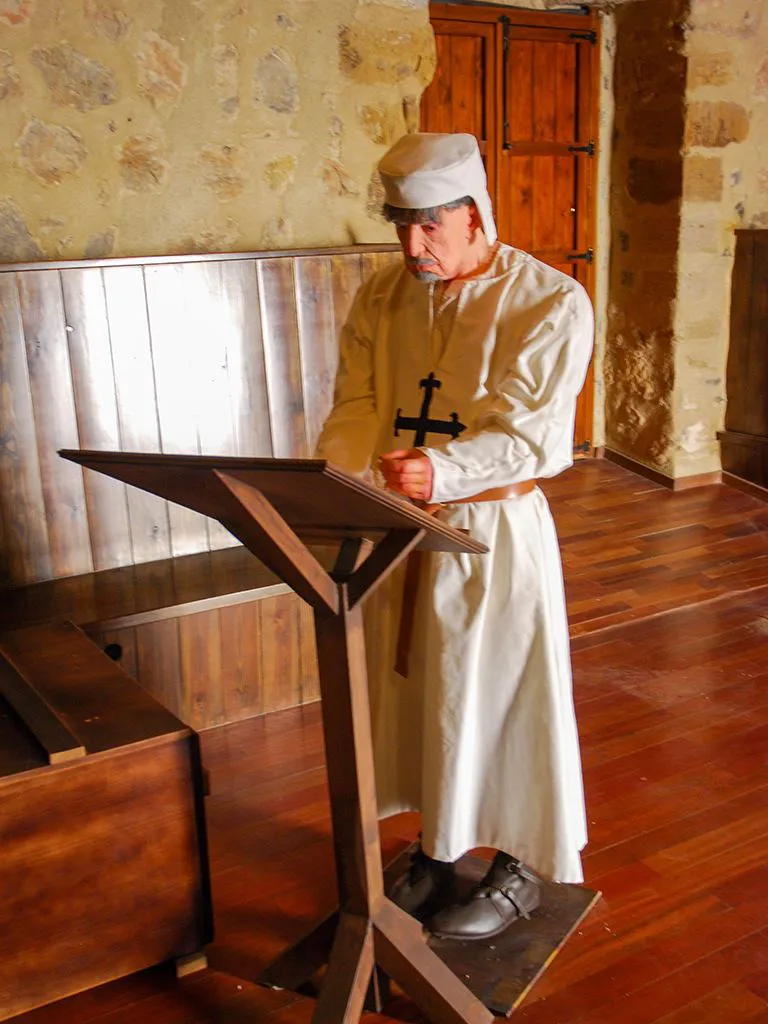
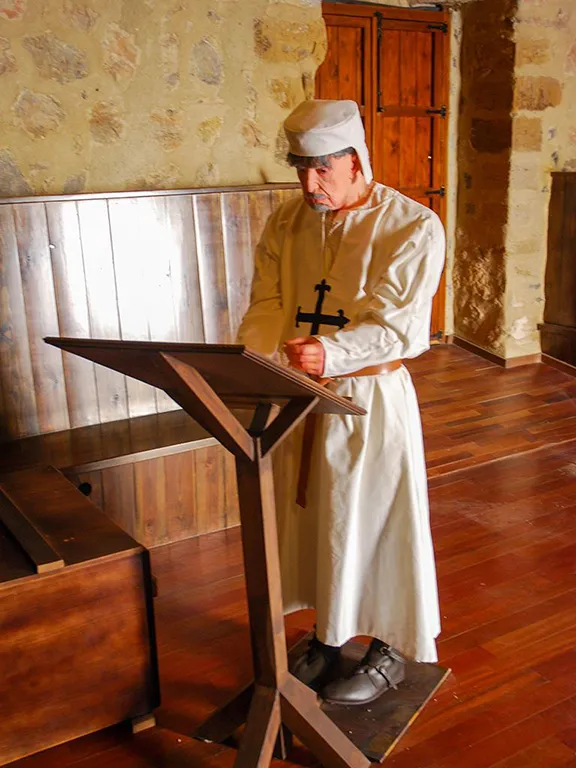
Monk Knight of Calatrava
In 1408, a Nazrid army from the Emirate of Granada, then ruled by Muhammad VII, sallied forth and laid siege to the fortress. The castle troops commanded by Sir Martín Alonso de Montemayor resisted and won after a hard battle. The siege inspired legends and stories and is still celebrated today by the citizens of Alcaudete during the second weekend of July.
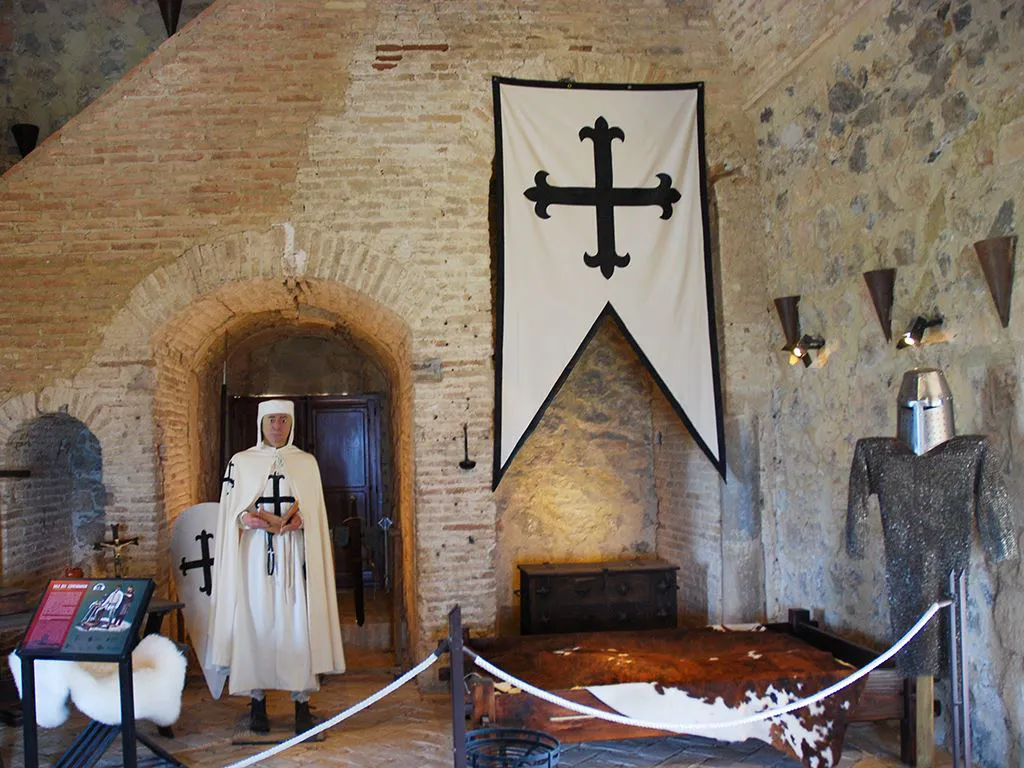
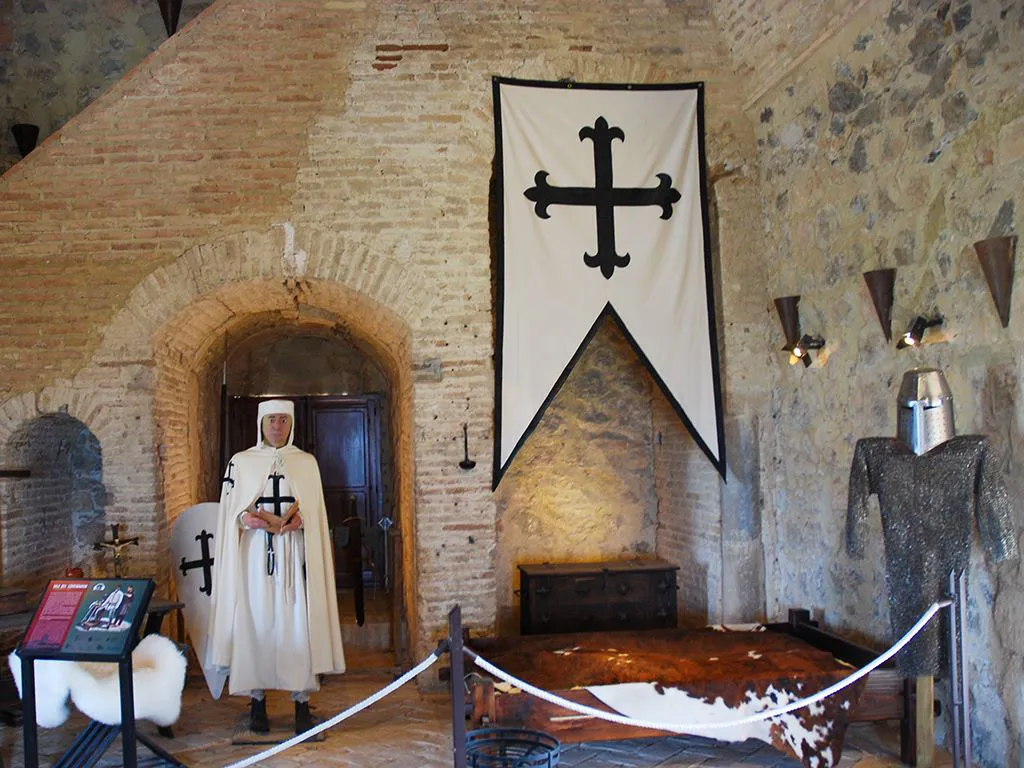
Because of its power and autonomy: its constitutions made it independent in temporal matters and acknowledged only spiritual superiors—the Abbot of Morimond and, on appeal, the Pope, the order maintained difficult relationships with the crown of Castile and territorial quarrels with the Orders of Saint James and Saint John.
Peter (the Cruel) of Castile entered into a conflict with the Order. He had three grand masters in succession sentenced to death, as having incurred his wrath: the first of these was beheaded in 1355 on a charge of having entered into a league with the King of Aragon; the second, Estevañez, having competed for the grand mastership with the king's candidate, García de Padilla, was murdered in the royal palace, some say by the King himself; lastly García de Padilla, a brother of the royal mistress, fell into disgrace, upon deserting the King's party for that of his half brother, Henry the Bastard, and died in prison in 1369.
The ever-increasing power of the Order of Calatrava was seen by the Catholic Monarchs, Ferdinand and Isabella, as a direct threat to their own power. In 1487, taking advantage of the death of the twenty seventh Grand Master, Lopez de Padilla, Pope Innocent VIII appointed Ferdinand as the Grand Master of the Order of Calatrava. Ferdinand’s successors have held the title to the present day. In 1523, Pope Adrian VI annexed the mastership to the crown in perpetuity.


The Order of Calatrava still exists as the Royal Council of the Spanish Chivalry Order, together with the Orders of Saint James, Alcántara, and Montesa.